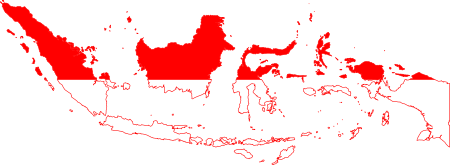Tumbling (sport)
| |||||||||||||||||||||||||||||||||||||||||||||||||||||||||||||||||||||||||||||||||||||||||||||||||||||||||||||||||||||||||||||||||||||||||||||||||||||||||||||||||||||||||||||||||||||||||||||||||||||||||||||||||||||||||||||||||||||||||||||||||||||||||||||||||||||||||||||||||||||||||||||||||||||||||||||||||||||||||||||||||||||||||||||||||||||||||||||||||||
Read other articles:
2020年夏季奥林匹克运动会波兰代表團波兰国旗IOC編碼POLNOC波蘭奧林匹克委員會網站olimpijski.pl(英文)(波兰文)2020年夏季奥林匹克运动会(東京)2021年7月23日至8月8日(受2019冠状病毒病疫情影响推迟,但仍保留原定名称)運動員206參賽項目24个大项旗手开幕式:帕维尔·科热尼奥夫斯基(游泳)和马娅·沃什乔夫斯卡(自行车)[1]闭幕式:卡罗利娜·纳亚(皮划艇)[2…
2020年夏季奥林匹克运动会波兰代表團波兰国旗IOC編碼POLNOC波蘭奧林匹克委員會網站olimpijski.pl(英文)(波兰文)2020年夏季奥林匹克运动会(東京)2021年7月23日至8月8日(受2019冠状病毒病疫情影响推迟,但仍保留原定名称)運動員206參賽項目24个大项旗手开幕式:帕维尔·科热尼奥夫斯基(游泳)和马娅·沃什乔夫斯卡(自行车)[1]闭幕式:卡罗利娜·纳亚(皮划艇)[2…

Este artículo o sección tiene referencias, pero necesita más para complementar su verificabilidad. Busca fuentes: «5.ª etapa de la Vuelta a España 2023» – noticias · libros · académico · imágenesEste aviso fue puesto el 4 de septiembre de 2023. 5.ª etapa de la Vuelta a España 2023 Detalles de la carreraCarrera5.ª etapa ، Vuelta a España 2023Tipo Etapa escarpadaFecha30 de agosto de 2023Distancia186,2 kmPaís EspañaLugar de inicioMorellaLugar de llegadaBurria…

Private spaceflight industry group Commercial Spaceflight FederationCSF Logo Redesign 2016Founded2005TypeNon-profit Trade AssociationPurposeTo promote the development of commercial human spaceflight, pursue ever higher levels of safety, and share best practices and expertise throughout the industry.[1]LocationWashington D.C.Area served United StatesMembers 80+Key peopleKarina Drees (President)Websitecommercialspaceflight.org Karina Drees, President The Commercial Spaceflight Federation i…

Boubacar Barry Informasi pribadiNama lengkap Boubacar Barry[1]Tanggal lahir 30 Desember 1979 (umur 44)Tempat lahir Abidjan, Pantai GadingTinggi 1,81 m (5 ft 11 in)[2]Posisi bermain GoalkeeperInformasi klubKlub saat ini LokerenNomor 1Karier senior*Tahun Tim Tampil (Gol)1999–2001 ASEC Mimosas 17 (0)2001–2003 Rennes B 23 (0)2003–2007 Beveren 102 (0)2007– Lokeren 151 (1)Tim nasional‡2000– Pantai Gading 69 (0) * Penampilan dan gol di klub senior hanya d…

Dutch politician Agnes MulderMember of the House of RepresentativesIn office20 September 2012 – 10 May 2023 Personal detailsBorn (1973-10-21) 21 October 1973 (age 50)Hardenberg, NetherlandsPolitical partyChristian Democratic AppealAlma materUniversity of GroningenOccupationPolitician Agnes Henriëtte Mulder (born 21 October 1973) is a Dutch politician serving as a member of the House of Representatives since 2012. A member of the Christian Democratic Appeal (CDA), she was previou…

Peta Keresidenan Rembang, 1928 Keresidenan Rembang adalah sebuah keresidenan yang terletak di Jawa Tengah. Keresidenan ini meliputi Rembang dan Blora.[1] Sebelumnya, keresidenan ini bersama-sama dengan Keresidenan Jepara merupakan suatu kesatuan yang disebut Keresidenan Jepara-Rembang yang meliputi Jepara, Rembang, Pati, Blora, dan Kudus.[2] Keresidenan ini lebih lanjut dipecah menjadi keresidenan lain, yaitu Keresidenan Bojonegoro yang meliputi Bojonegoro, Tuban, dan Lamongan.&#…

This article uses bare URLs, which are uninformative and vulnerable to link rot. Please consider converting them to full citations to ensure the article remains verifiable and maintains a consistent citation style. Several templates and tools are available to assist in formatting, such as reFill (documentation) and Citation bot (documentation). (August 2022) (Learn how and when to remove this message) Emigration from Colombia is a migratory phenomenon that started in the early 20th century.[…

Import tariffs imposed on goods found to be unfairly subsidized by their exporter This article does not cite any sources. Please help improve this article by adding citations to reliable sources. Unsourced material may be challenged and removed.Find sources: Countervailing duties – news · newspapers · books · scholar · JSTOR (July 2019) (Learn how and when to remove this message) Part of a series onWorld trade Policy Import Export Balance of trade Trade l…

Saudi Arabian passportSampul depan kontemporer Arab Saudi.Penerbit Arab SaudiJenis dokumenPasporTujuanIdentifikasiSyarat kepemilikanKewarganegaraan Arab Saudi Paspor Arab Saudi dikeluarkan oleh pemerintah Arab Saudi untuk warga negaranya untuk melakukan perjalanan internasional. Terjemahan Paspor Arab Saudi memiliki kata-kata berikut pada sampulnya: المملكة العربية السعوديةKingdom Of Saudi ArabiaKerajaan Arab Saudi عضو جامعة الدول العربيةMember of t…

Este artículo o sección tiene referencias, pero necesita más para complementar su verificabilidad. Busca fuentes: «Cine mudo» – noticias · libros · académico · imágenesEste aviso fue puesto el 20 de septiembre de 2016. Fotograma de la película muda Lirios rotos, con Lillian Gish y Richard Barthelmess expresando sus acciones a través del lenguaje corporal, algo característico de las películas mudas.[1] El cine mudo es aquél en el que no hay sonido sincro…

Peta infrastruktur dan tata guna lahan di Komune Beaumont-en-Verdunois. = Kawasan perkotaan = Lahan subur = Padang rumput = Lahan pertanaman campuran = Hutan = Vegetasi perdu = Lahan basah = Anak sungaiBeaumont-en-Verdunois merupakan sebuah desa dan komune di département Meuse di timurlaut Prancis. Sejak akhir Pertempuran Verdun tahun 1916, wilayah ini tidak lagi ditempati (jumlah penduduk resmi: 0) bersama dengan Bezonvaux, Haumont-près-Samogneu…

Disambiguazione – Haradin rimanda qui. Se stai cercando la specie di Star Trek, vedi Specie di Star Trek#Haradin. Questa voce o sezione sull'argomento militari è priva o carente di note e riferimenti bibliografici puntuali. Sebbene vi siano una bibliografia e/o dei collegamenti esterni, manca la contestualizzazione delle fonti con note a piè di pagina o altri riferimenti precisi che indichino puntualmente la provenienza delle informazioni. Puoi migliorare questa voce citando le …

اضغط هنا للاطلاع على كيفية قراءة التصنيف بيوي أخضر صوت الطائر noicon حالة الحفظ أنواع غير مهددة أو خطر انقراض ضعيف جدا [1] المرتبة التصنيفية نوع[2][3] التصنيف العلمي النطاق: حقيقيات النوى المملكة: حيوانات الشعبة: الحبليات الشعيبة: الفقاريات غير مصنف: الفكيات غي�…

Railway station in Tel Aviv, Israel Tel Aviv HaHaganaתחנת תל אביב ההגנהIsrael RailwaysGeneral informationLocation32 HaHagana Way, Tel AvivCoordinates32°03′15″N 34°47′05″E / 32.05417°N 34.78472°E / 32.05417; 34.78472Line(s)Jaffa–Jerusalem railwayAyalon railwayPlatforms5Tracks5ConstructionAccessibleYesHistoryOpened22 June 2002; 22 years ago (2002-06-22)Electrified21 December 2019; 4 years ago (2019-12-21)Passe…

Distance measured along the surface of the Earth Geodesy Fundamentals Geodesy Geodynamics Geomatics History Concepts Geographical distance Geoid Figure of the Earth (radius and circumference) Geodetic coordinates Geodetic datum Geodesic Horizontal position representation Latitude / Longitude Map projection Reference ellipsoid Satellite geodesy Spatial reference system Spatial relations Vertical positions Technologies Global Nav. Sat. Systems (GNSSs) Global Pos. System (GPS) GLONASS (Rus…

South African-New Zealand netball player Irene van DykMNZM Van Dyk in 2010Personal informationFull name Irene van Dyk (née Viljoen)Born (1972-06-21) 21 June 1972 (age 52)Vereeniging, Gauteng, South AfricaHeight 1.93 m (6 ft 4 in)Occupation Primary school teacherSpouse Christie van DykChildren Bianca van DykNetball career Playing position(s): GS, GAYears Club team(s) Apps2000–2002 Capital Shakers 2003–2013 Waikato Bay of Plenty Magic 2014–2016 Central Pulse (Correc…

kuai tiao nam tok, mi berkuah gelap yang dicampur darah mentah, disajikan di Bangkok, Thailand Bahan-bahan mi nam tok di Thailand. Panci di kanan atas berisi darah babi mentah yang akan disiramkan ke dalam kuah mi Nuea yang nam tok, irisan daging sapi panggang bersaus pedas dengan campuran bawang merah dan mint Nam tok (bahasa Thai: น้ำตก, RTGS: pengucapan [nám tòk]) adalah hidangan sup atau selada daging yang berasal dari Asia Tenggara, khususnya Thailand dan Laos. Dalam ba…

C. 2400–1550 BCE Lower Nubian archaeological culture C-Group redirects here. For other uses, see C group. C-Group cultureBowl of the C-Group, Musée du LouvreGeographical rangeNubia in Northeast AfricaPeriodBronze AgeDatesc. 2400 – 1550 BCEPreceded byA-Group culture B-Group cultureFollowed byMiddle KingdomDefined byGeorge Andrew Reisner ChalcolithicEneolithic, Aeneolithic,or Copper Age ↑ Stone Age ↑ Neolithic By regionAfrica (2600 BC–1600 AD) Naqada culture, Gerzeh c…

الخاصية المكثفة (بالإنجليزية: intensive property) في العلوم الطبيعية، هي خاصية فيزيائية لنظام لا تعتمد على حجم النظام ولا على كمية المادة به، مثال على ذلك الكثافة. وأما الخاصية الشمولية (بالإنجليزية: extensive quantity) أو كمية شمولية أو متغير شمولي فهي خاصية تتناسب مع كمية المادة في نظام.&…
